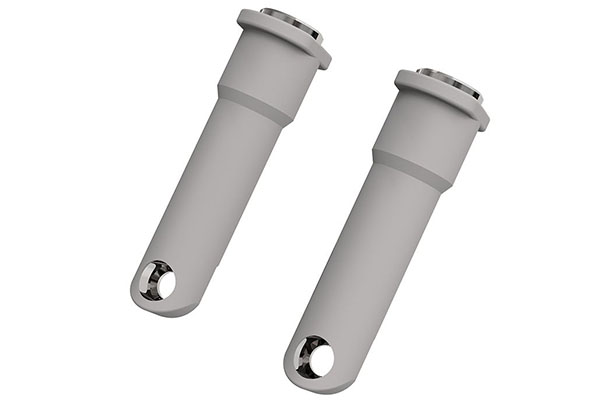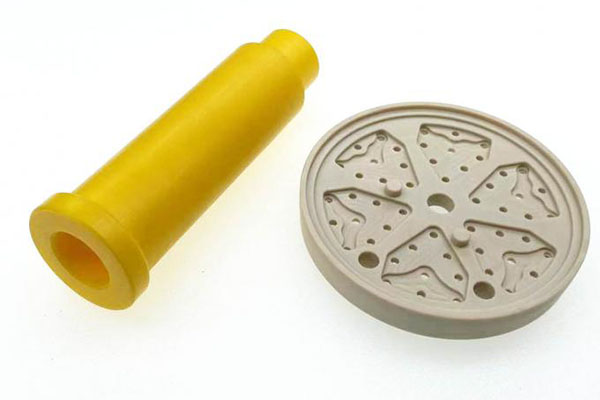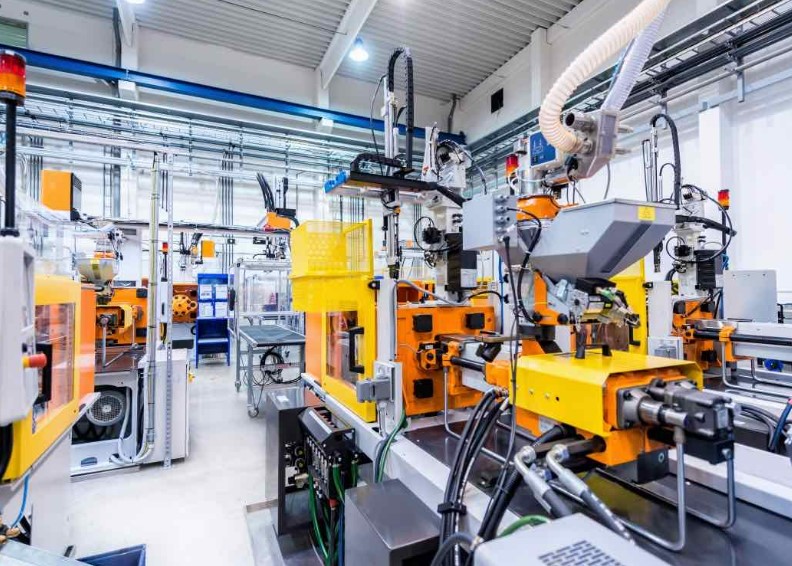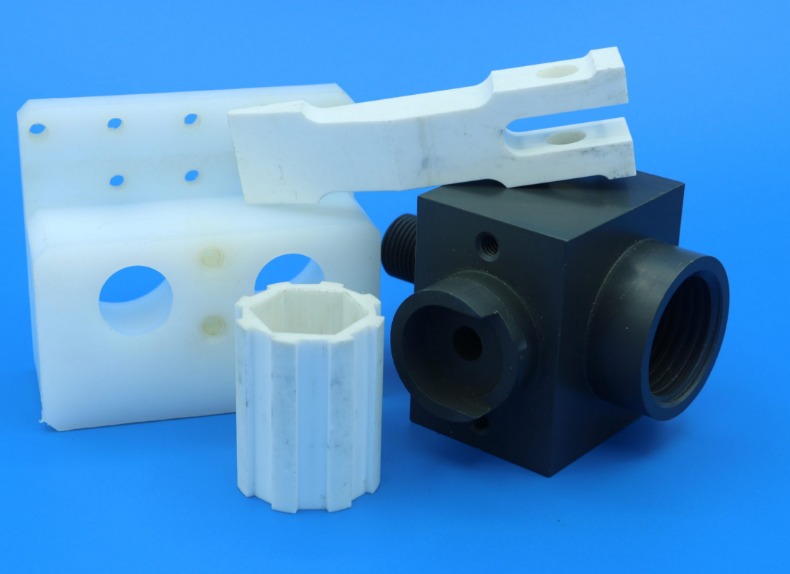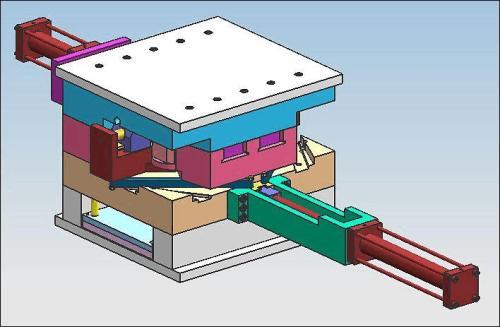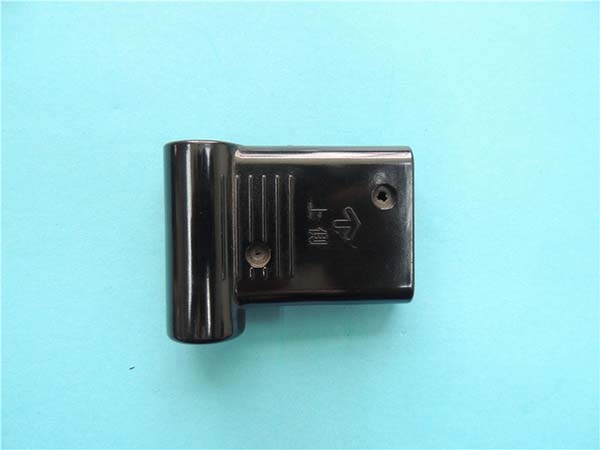What Exactly are IMM Injection Moulding Machines?
IMM Injection Moulding Machines, or simply injection moulding machines, are the workhorses of the plastic manufacturing industry. Their primary function is to transform raw plastic materials into a vast array of finished products. But how do they work?
The process is somewhat akin to using a syringe. First, plastic pellets are fed into a heated barrel. As the barrel rotates, the plastic melts under heat and shear forces. Once fully molten, it's like a viscous liquid ready to be dispensed. Then, a high - pressure screw or plunger (similar to pushing the plunger of a syringe) injects this molten plastic into a precisely designed mold cavity. The mold is usually made of steel or aluminum and has the negative impression of the final product. Once inside the mold, the plastic cools and solidifies, taking on the shape of the mold. After a short cooling period, the mold opens, and the newly formed plastic part is ejected, ready for further processing or use.
This process is highly versatile and efficient, allowing for the mass production of plastic items with tight tolerances. From the tiny components in a smartphone to large automotive parts, IMM Injection Moulding Machines play a crucial role. Understanding their basic working principle is the first step in appreciating their applications, types, and the factors to consider when choosing one, which we will explore in the following sections.
Key Components and Their Functions
The Heart: Screw and Barrel Assembly
At the core of an IMM Injection Moulding Machine lies the screw and barrel assembly. The screw is responsible for two crucial tasks: plasticizing and conveying the plastic material. As the screw rotates within the barrel, it kneads and shears the plastic pellets. This mechanical action, combined with the heat generated by the barrel, causes the plastic to melt and become a homogeneous, viscous mass.
The barrel, on the other hand, provides the necessary heating environment. It is equipped with heating bands that can be precisely controlled to reach the optimal melting temperature for different types of plastics. For example, polyethylene (PE) typically melts at around 110 - 130°C, while polycarbonate (PC) requires a higher temperature range of 250 - 300°C. The smooth inner surface of the barrel allows the molten plastic to flow easily as the screw pushes it forward.
The efficiency of the screw and barrel assembly directly impacts the quality of the injection process. A well - functioning assembly ensures uniform plasticization, which means that the molten plastic has a consistent viscosity throughout. This is essential for producing high - quality plastic parts with uniform wall thicknesses and mechanical properties. If the plastic is not properly plasticized, it can lead to issues such as uneven filling of the mold cavity, visible flow marks on the finished product, or even product defects like voids or cracks.
Clamping Unit: Holding it All Together
The clamping unit is another vital component of the injection moulding machine. Its primary role is to close the mold during the injection process and maintain a sufficient clamping force to prevent any plastic leakage or flash formation. When the injection unit injects the molten plastic into the mold cavity at high pressure, the clamping unit must counteract this force to keep the two halves of the mold tightly together.
The clamping unit consists of several parts, including the fixed and moving platens, tie - bars, and the clamping mechanism. There are different types of clamping mechanisms, with hydraulic and toggle - type systems being the most common. Hydraulic clamping units use hydraulic cylinders to generate the clamping force. They offer smooth operation and the ability to adjust the clamping force precisely. Toggle - type clamping units, on the other hand, use a mechanical linkage system. They are known for their high - speed operation and energy - efficient performance once the mold is closed.
The working process of the clamping unit typically involves the following steps: first, the moving platen is rapidly moved towards the fixed platen to close the mold. Once the mold is almost closed, the clamping mechanism engages and gradually builds up the clamping force to the required level. After the plastic has cooled and solidified in the mold, the clamping force is released, and the moving platen retracts to open the mold, allowing the ejection of the finished part.
Injection Unit: Precision Delivery
The injection unit is responsible for injecting the molten plastic, which has been plasticized by the screw and barrel assembly, into the mold cavity with precision. This unit is like the "injector" in the injection - molding process.
The working process of the injection unit starts when the plastic is fully plasticized in the barrel. Then, the screw acts as a piston, pushing the molten plastic forward through the nozzle and into the mold. The key parameters of the injection unit include injection volume, injection speed, and injection pressure.
The injection volume determines the amount of plastic that is injected into the mold cavity. It is crucial to accurately control this parameter to ensure that the plastic part has the correct size and weight. For example, if the injection volume is too low, the part may be under - filled, resulting in a defective product. On the other hand, if it is too high, there may be flash or excessive material waste.
Injection speed refers to how quickly the molten plastic is injected into the mold. A high injection speed can reduce the cycle time and is beneficial for filling complex mold cavities or producing thin - walled parts. However, it may also cause issues such as air entrapment, surface defects, or even over - packing. A low injection speed, while reducing the risk of some of these problems, may lead to longer cycle times and potential problems with incomplete filling, especially for large or intricate molds.
Injection pressure is the force exerted on the molten plastic during injection. It must be carefully adjusted according to the type of plastic, the mold design, and the desired product quality. High - pressure injection may be necessary for plastics with high viscosity or for filling molds with long flow paths. But excessive pressure can cause the mold to deform, damage the mold components, or create high internal stresses in the finished part, which may lead to warping or cracking later on.
Different Types of IMM Injection Moulding Machines
General - Purpose Injection Moulding Machines
General - purpose injection moulding machines are the most commonly found type in the industry. They are designed to handle a wide range of plastic materials and are suitable for producing a vast variety of products. These machines are workhorses in the manufacturing world, with applications in almost every sector that uses plastic products.
One of their main advantages is their versatility. They can produce everyday items such as plastic containers, toys, and household appliances. For example, the small plastic shampoo bottles we use daily are often produced on general - purpose injection moulding machines. In terms of technical parameters, they usually have a clamping force ranging from 50 to 5000 tons. The injection volume can vary widely, from a few cubic centimeters to several thousand cubic centimeters, depending on the size of the machine. This wide range of parameters allows manufacturers to produce small, intricate parts as well as large - scale plastic components.
Multi - Component Injection Moulding Machines
Multi - component injection moulding machines are specifically designed for producing more complex plastic products. These machines are capable of injecting two or more different types of plastic materials into the mold cavity simultaneously or in sequence. This technology is widely used in the automotive industry for manufacturing parts like interior components, where different materials with varying properties may be required. For instance, a car dashboard might have a soft - touch surface layer made of one type of plastic for comfort and a rigid inner structure made of another plastic for strength.
The working principle of multi - component injection moulding machines involves multiple injection units. Each injection unit is responsible for melting and injecting a specific plastic material. The mold design is also more complex, with channels and gates that direct the flow of each material to the appropriate areas of the mold cavity. The main advantage of these machines is the ability to create products with enhanced functionality and aesthetics. By combining different materials, manufacturers can achieve properties such as improved durability, better chemical resistance, or unique visual effects in a single product.
Special - Purpose Machines (e.g., for Thermosets or Rubber)
Special - purpose injection moulding machines are tailored for specific materials, such as thermosets or rubber. Thermosetting plastics are materials that, once cured under heat and pressure, cannot be remelted. This is in contrast to thermoplastics, which can be melted and remolded multiple times. Rubber injection moulding machines are designed to handle the unique rheological properties of rubber compounds.
The main difference between these special - purpose machines and general - purpose machines lies in the heating and cooling systems, as well as the injection mechanisms. For thermoset injection moulding machines, they require precise temperature control during the curing process to ensure the proper chemical reaction occurs. The injection pressure and speed also need to be carefully adjusted to avoid over - curing or incomplete curing of the thermoset material. In rubber injection moulding, the machines often need to handle higher viscosity materials compared to common thermoplastics. The molds are also designed to accommodate the expansion and contraction characteristics of rubber during the molding process.
These special - purpose machines find applications in industries such as electrical insulation (thermosets) and automotive tire production (rubber). For example, electrical connectors made of thermoset plastics are highly resistant to heat and electricity, making them ideal for use in electrical devices. Rubber injection moulding machines are crucial for producing high - quality tires with precise tread patterns and consistent quality.
Yigu Technology's Perspective
As a non - standard plastic metal products custom Supplier, Yigu Technology has extensive experience collaborating with IMM Injection Moulding Machines. In our operations, we've found that when dealing with complex molds and special materials, these machines need to have higher precision and adaptability.
For instance, when working on custom - designed plastic parts with intricate geometries, the injection moulding machine must be able to accurately control the flow of molten plastic into every detail of the mold. Special materials, such as high - temperature - resistant plastics or those with unique chemical properties, demand machines that can maintain stable processing conditions.
The stable operation of IMM Injection Moulding Machines is of utmost importance for producing high - quality custom products. Any fluctuations in injection pressure, temperature, or clamping force can lead to defects in the final product. At Yigu Technology, we value machines that offer reliable performance, as this directly impacts our ability to meet the strict quality requirements of our clients.
FAQ
What factors should I consider when choosing an IMM injection moulding machine?
When choosing an IMM injection moulding machine, several factors come into play. First, consider your product requirements. The size, complexity, and precision of the plastic parts you intend to produce will determine the machine's clamping force, injection volume, and precision capabilities. For instance, if you're making small, intricate electronic components, you'll need a machine with high - precision injection and a relatively lower clamping force compared to manufacturing large automotive parts.
Your budget is another crucial factor. Injection moulding machines can vary widely in price, from affordable general - purpose models for small - scale production to high - end, multi - component machines that come with a hefty price tag. It's important to find a balance between cost and the features you need.
Production scale also matters. If you're planning for large - scale, high - volume production, you'll need a machine with high - speed operation, efficient plasticizing, and reliable long - term performance. On the other hand, for small - scale or custom production, a more flexible and cost - effective machine might be sufficient. Additionally, think about the types of plastics you'll be using, as different materials have different processing requirements in terms of temperature, pressure, and screw design.
How can I maintain my IMM injection moulding machine to ensure its long - term performance?
Regular maintenance is key to keeping your IMM injection moulding machine in top - shape. Daily, you should conduct visual inspections. Check for any signs of wear and tear on the machine's components, such as the screw, barrel, and mold. Look for leaks in the hydraulic or cooling systems. Clean the machine, removing any plastic debris or dust that could potentially affect its performance.
Lubrication is another crucial aspect. Regularly lubricate moving parts like the tie - bars, screws, and toggle mechanisms. The frequency of lubrication depends on the machine's usage but is typically done daily or weekly. This reduces friction and wear, ensuring smooth operation.
Periodic checks of the machine's electrical and control systems are also essential. Make sure all sensors, switches, and controllers are functioning properly. Check for any loose connections or signs of electrical damage. It's advisable to have a professional technician perform a more in - depth inspection and maintenance at least once a year, which may include tasks like replacing worn - out parts, calibrating sensors, and fine - tuning the machine's settings.
Are there any environmental considerations when using IMM injection moulding machines?
Yes, there are environmental aspects to consider. One major concern is energy consumption. Injection moulding machines can consume a significant amount of electricity, especially during the heating and injection processes. To mitigate this, you can invest in energy - efficient machines that are designed with features like servo - hydraulic systems, which can reduce energy usage by up to 50% compared to traditional hydraulic systems.
Another environmental issue is plastic waste. The injection moulding process may produce waste in the form of runner systems, defective parts, or excess plastic. To address this, recycling can be an effective solution. Many plastics can be recycled and reused in the injection moulding process. Additionally, optimizing the mould design to minimize runner waste and improving the production process to reduce defects can also help reduce the amount of plastic waste generated.


